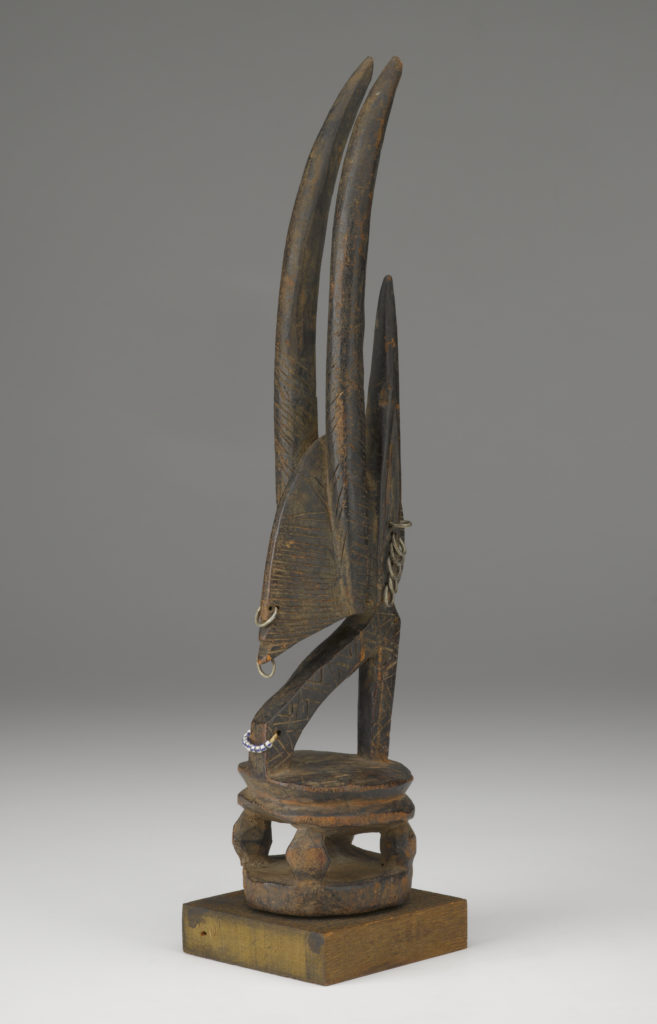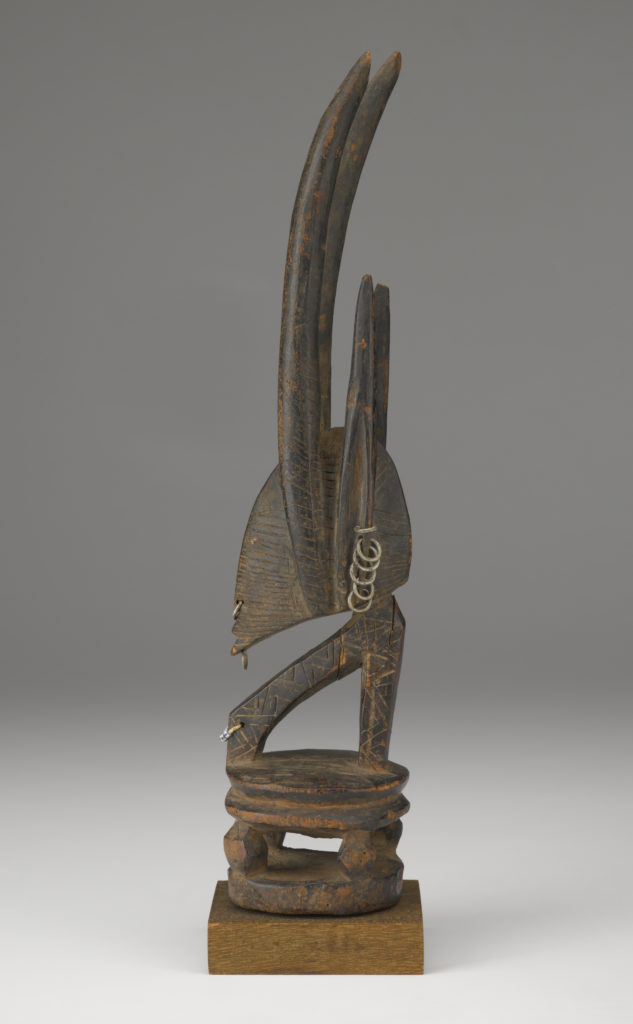Crest Mask Head (ci wara kun) (work of art)
Información sobre la obra de arte
Key Ideas
- Ci-wara (chi-wa-rah) crest masks depict mythical creatures with human and animal characteristics. This crest mask is shaped like an antelope with tall, narrow horns.
- Ci-wara rituals are community events that are often performed in male-female pairs, to promote the cooperation needed for married life and farming.
- This mask is only one part of the full-body costume worn by male dancers during ci-wara performances.
Más información
The Mande-speaking peoples are a large ethnic group in West Africa. The Bamana are a subgroup of the Mande. They live in Mali and are well known for their ci-wara masquerade. Ci-wara kun represents the spirit that taught the Bamana ancestors how to till the earth and grow crops. At traditional planting and harvest festivals, the most successful farmers are chosen to dance in honor of this spirit. They wear ci-wara crest masks as headdresses that represent male and female antelopes. The antelope represents the creative forces of nature and the cooperation needed for successful farming.
Crest masks are attached to woven caps that can be secured to the heads of the male dancers. Their bodies are covered with long, thick raffia costumes that sound like rain falling when they dance. Each dancer holds two long sticks to represent the rays of the sun. While the men leap (to imitate an antelope), the women dance beside them. Women have an active role in the performance. They sing praises to the “ideal farmer” who has the grace, strength, and endurance of an antelope. The women add to the entertainment by imitating and interrupting the male dancers during the performance.
This crest mask is part of a full-body costume that would be worn by a male dancer in a ci-wara masquerade. Masks like this one feature carved details that highlight the main characteristics of an antelope. These include a narrow head, a gracefully arching neck, and long horns. Human characteristics (like earrings and nose rings) are often incorporated into crest masks.
Recursos adicionales
Recursos para los profesores:
- Read an article about ci-wara headdresses.
- Review a lesson plan that explores Bamana crest masks.
- Use question prompts for a discussion about crest masks.
Recursos para los estudiantes:
- Watch a time-lapse video of the African gallery installation at the NCMA.
- View other crest masks in the NCMA collection.
- Watch a video about the ci-wara masquerade.


